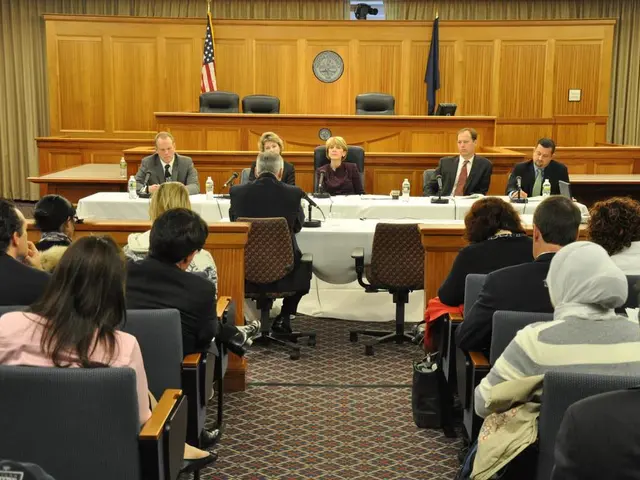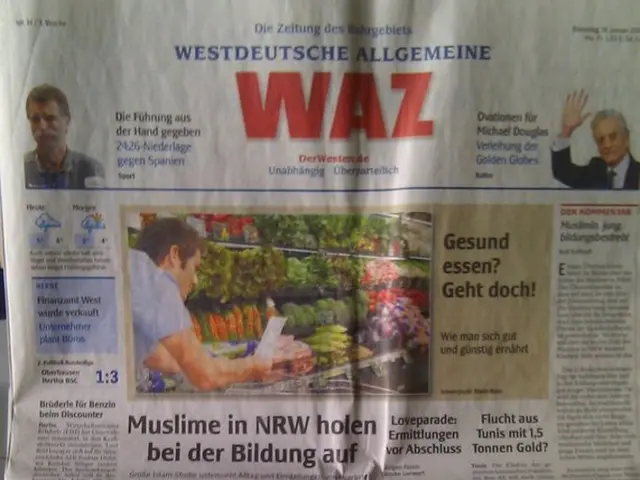Emaciated Child in Gaza: The Shocking Backstory Revealed: A Photograph of a Malnourished Child Wrapped in a Plastic Bag as a Diaper
Crisis in Gaza: Soaring Child Malnutrition and Deaths
The humanitarian situation in Gaza is in a state of crisis, with children facing severe malnutrition and food insecurity. Over the past few months, more than 100 people, mostly children, have died waiting for food at humanitarian centers, according to the UN human rights office.
Since January 2025, at least 20 children have died from severe acute malnutrition, with the number increasing daily. In June alone, 6,000 children were found to suffer from acute malnutrition—a 180% increase since February 2025.
The World Food Programme estimates that about a quarter of Gaza’s 2.1 million people face famine-like conditions, with nearly 100,000 women and children in urgent need of treatment for severe acute malnutrition. Food supplies are critically low, around 6% of normal pre-war levels, and humanitarian aid deliveries remain severely restricted, impeding relief efforts.
UNICEF and the World Food Programme (WFP) have called for safe and unrestricted humanitarian access into Gaza to deliver urgently needed medical and food supplies. However, ongoing restrictions and insecurity have hindered these efforts. The Red Cross and Red Crescent are also working on the ground, providing critical aid to those affected, but the scale of need far outstrips current capacities.
The United Nations and over 100 international NGOs have warned that Palestinians are beginning to die of hunger en masse. The UN's human rights office reports that over 1,000 Palestinians have been killed by the Israeli military while trying to get food aid over the last two months. Israel, however, maintains that its troops only fire warning shots and do not deliberately shoot civilians.
In an attempt to alleviate the suffering, British science and technology minister Peter Kyle has expressed a desire for Palestinian statehood and a focus on easing the suffering in Gaza. Meanwhile, French President Emmanuel Macron announced his intention to recognize a Palestinian state in September. However, these moves have been met with resistance, with a senior Labour official stating that Keir Starmer and his senior advisors are a block to this recognition due to their desire to stay close to the U.S.
The conflict in Gaza has displaced many families, including Muhammad Zakariya Ayyoub al-Matouq, an 18-month-old child who was photographed in a bare tent in Gaza City with his spine and ribs exposed due to severe malnutrition. Muhammad received no baby milk, no formula, and no vitamins. His mother and he were displaced by the conflict from their home in northern Gaza and were found in a tent with only a small oven.
Journalist Ahmed al-Arini took a photo of Muhammad to show the world the extreme hunger that babies and children are suffering from in the Gaza Strip. UNICEF has stated that agencies will run out of the crucial specialised therapeutic food needed to save malnourished children by August if nothing changes.
The situation in Gaza requires urgent international attention and action to prevent further child deaths and alleviate the suffering of its people.
- The news about the humanitarian crisis in Gaza is alarming, highlighting surging cases of child malnutrition and deaths.
- These tragic events have sparked discussions in the realm of health and wellness, drawing attention to the urgent need for action.
- The scientific community is closely monitoring the situation, with environmental science offering insights into the factors contributing to this crisis.
- Climate change and its impact on agriculture are suspected to play a role in the food insecurity faced by Gaza residents.
- Technology, particularly in the manufacturing industry, could potentially provide solutions for the production and distribution of essential food supplies.
- In the world of medical-conditions, the rise in severe acute malnutrition is a clear indication of the severity of the situation.
- Cancer, respiratory conditions, digestive-health issues, eye-health concerns, hearing problems, and other health complications may also worsen due to malnutrition.
- Mental-health experts are also concerned about the psychological impact of this crisis on the affected children and their families.
- Skin-care products are part of the retail sector, but their relevance pales in comparison to the immediate need for food and medical supplies in Gaza.
- Fitness and exercise play a crucial role in maintain overall health, but they are irrelevant in the face of the widespread malnutrition in Gaza.
- Medical professionals are treating as many patients as they can, but the scale of the crisis outstrips their resources, particularly in regard to addressing autoimmune-disorders.
- The finance industry can play a significant role in supporting humanitarian efforts in Gaza through donations and funding.
- Energy companies may also contribute by providing power to humanitarian centers to ensure proper storage and distribution of food and medical supplies.
- In the realm of skin-care, attention shifted from common conditions like acne and aging to more pressing issues in Gaza, such as malnutrition-induced skin diseases.
- Nutritionists are emphasizing the importance of proper diet in maintaining health and combating malnutrition.
- Weight-management professionals are focusing on addressing malnutrition rather than promoting weight loss in Gaza.
- The industry, including both traditional and venture capitalism, is being urged to invest in solutions for food and medical supply shortages in Gaza.
- The environment is affected by the crisis in Gaza, with waste accumulating due to the lack of resources for proper disposal.
- Interior designers, chefs, and bakers can contribute to the cause by using their skills to innovate ways to prepare food using limited resources.
- Cooking and baking can be a powerful tool in the fight against malnutrition, as simple recipes can help stretch scarce food supplies.
- Transportation is crucial for delivering aid to Gaza, but current restrictions are hindering these efforts.
- Cybersecurity experts are working to combat misinformation and ensure accurate reporting on the crisis in Gaza.
- Lifestyle choices can impact the severity of the crisis, with more conscious decisions promoting sustainable living.
- Outdoor living is important for mental and physical health, but for children in Gaza, it is a luxury they cannot afford due to the threat of malnutrition.
- Food and drink are central to the culture of many global cuisines, but for those in Gaza, they are a matter of survival.
- Dining experiences are few and far between for those struggling with malnutrition in Gaza.
- Families in Gaza are facing tremendous hardships, with family dynamics greatly affected by the crisis.
- Investing in solutions for Gaza is a crucial step towards wealth management, ensuring a more stable and prosperous future for its people.
- Wealth managers are advising their clients on how to contribute to humanitarian efforts and invest in sustainable solutions.
- Home and garden design can provide temporary shelter and help create a sense of normalcy for displaced families in Gaza.
- Home improvement projects may seem irrelevant in the face of the crisis, but they can play a role in improving living conditions for those affected.
- Baking and making beverages are simple ways to bring joy and comfort to those struggling with malnutrition in Gaza.
- Love and dating may be the least of people's concerns in Gaza, but relationships remain vital for maintaining emotional well-being.
- Business, economics, and politics all intersect in the crisis in Gaza, requiring collaborative efforts from all sectors to alleviate suffering and promote lasting peace.




